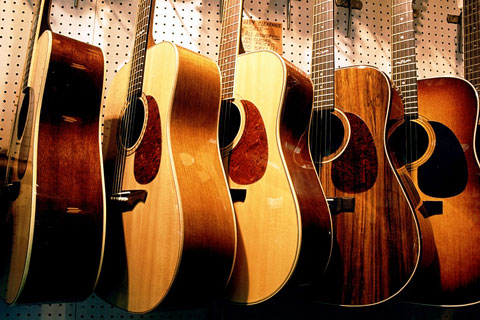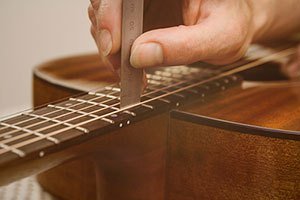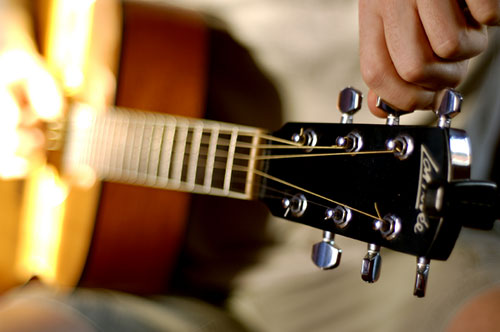Acousticbits #1 –Buying Your First Acoustic Guitar… For the Complete Beginner (Part 2 – Playability)
So you finally decided you want to learn how to play the guitar. You can care less about becoming the next musical legend; you just want to get to the fun part as fast as possible. You want to avoid learning all the theory and technical stuff, and only learn the absolutely necessary things to get rocking/jamming… You came to the right place.
This is @acousticbits and I’m here to guide you through this musical journey. Stick around and I promise you will be having fun rocking the guitar in no time. If you want to learn a bit more about myself , you can check my #introducemyself post right HERE.

Let’s get started!
First things first… if you wanna play guitar ,well… you need a guitar! So how do you go about choosing your first acoustic, and what should you be looking for? Should you just pick up anything at the store? The cheapest guitar around? I mean, you are just starting out… so any guitar will do… right? Well , the short answer is no .
In this first Acousticbits Series, I’ll cover the most important aspects of buying your first guitar if you are a complete beginner, and at the end I will give you my #1 pick for first time guitar buyers.
The #1 reason most beginner guitar players quit is because they bought the wrong guitar.
Here are some things to keep in mind when shopping for your first axe if you are a complete beginner:
1- Budget
2- Playability
3- Sound / Look
In this post we’ll discuss the second criteria… PLAYABILITY:
(Budget has been discussed in the previous post)
Playability:
Even though I put this criteria as #2, I believe this is the most important thing to consider when buying a guitar, at any price range.
As a general rule, the cheaper the guitar, the worst the playability will be… but what exactly do I mean when I say playability? There are 2 things you have to pay attention to when judging a guitar’s playability: Action & Intonation
Action:
Action refers to the distance between the strings and the fret board (see pic). The larger the distance (higher action), the more force will be needed to press the strings onto the fret board, making it harder to get a clean sound and making your virgin fingers extremely tired and sore. The shorter the distance (lower action), the less force will be needed, making it easier and less tiring.

So why would anyone want high action? Why not just get a cheap guitar and lower the action so it’s easier to play? Well, there are a lot of factors that go into this but the main problem is string buzz. When you press a string and strum it, you don’t want the other areas of the string touching anything but air in order to vibrate freely and produce a clean sound. If the action is too low, and the string comes in contact with another part of the guitar, you will get a buzz… the note will not sound clean.
This is all affected by the build of the guitar, the curvature of the guitar neck, the type of wood, etc… in general, cheaper guitars will have a high action, in order to avoid buzz. Better built guitars, can have lower action and also avoid buzz. You are trying to find a happy medium, and this happy medium will usually be higher on cheaper guitars (it will be harder to play to get a clean sound), and lower in good quality guitars (it will easier to play to get a clean sound).
Intonation:
In a nutshell, intonation is how well a guitar can stay in tune across the fret board. Basically you want the guitar to stay in tune for a considerable amount of time, and you want all the notes on the fret board to be in tune relative to each other. What I mean by this is… if you are playing a note, and then you play the same exact same note but in a different string and area of the fret board, you want them to sound the same… cheaper guitars struggle with this and they also tend to go out of tune as whole a lot faster. No matter how good of a player you are, if your guitar can’t stay in tune, it will just sound like crap.

So hopefully now you understand action and intonation. Cheaper guitars will tend to sound bad (bad intonation) and be harder to play (high action) – this in turn will make most beginners want to stop learning.
So how do you avoid all this? That’s where a professional setup comes into place. If there is one thing I want you to take away from this whole guide, it’s this… No matter what guitar you get, always get it properly setup by a professional before you take it home. If you buy a new guitar at a store, they will usually take care of this for you (you have to ask!) or if you buy used from someone else, you can always get it done for around $50. Getting the guitar properly setup is paramount, so no matter what guitar you end up with, get it properly setup by a professional!
In the next post, I will be discussing the 3rd most important thing to look at when buying your first acoustic guitar if you are a complete beginner: Sound/Look
Stay tuned!
awesome post, i thing its time for me to get one
thanks for the reply! I was starting to get worried no one was seeing these posts lol
its pretty awesome